In this article I have used information from various sources to support interpretations of the intent of the accessibility standards. If you have anything to add, leave a comment asap!
This article was published in Door Security + Safety
.

Although the requirements of the accessibility standards have not changed as frequently and radically as some of the other codes and standards addressing door openings, there are many questions about applying these mandates. This is often because the accessibility standards are less prescriptive than other codes in some of the sections that address door hardware.
One of the frequently asked questions is whether a piece of hardware can be certified as compliant with the ADA Standards for Accessible Design or ICC A117.1 – Accessible and Usable Buildings and Facilities. There is currently no certification standard that is referenced by the model codes or accessibility standards for determining the compliance of a product. However, there are resources to help us understand the intent of the requirements.
There are some specific exceptions in the codes and standards, but most doors are required by current codes to be accessible. The Commentary edition of the International Building Code (IBC) states: “In the early 1990s, building codes tended to describe where accessibility was required in each occupancy, and any circumstance not specifically identified was excluded. The more recent codes represent a fundamental change in approach. Now one must think of accessibility in terms of ‘if it is not specifically exempted, it must be accessible.’ “
One exception stated in the accessibility standards is related to doors that are operated only by security personnel; these doors are exempt from some (but not all) requirements. In the ADA standards and the ICC A117.1 Commentary, all references to security personnel are related to detention and correctional facilities, courthouses, and guards at security gates. An ADA advisory states that the exceptions would only apply to locations where security personnel have sole control of doors or gates. It is not permissible for security personnel to operate the doors for people with disabilities and allow other building occupants to have independent access.
The accessibility standards include separate sections for manually operated doors and for automatic doors. This article focuses on the requirements for the operable hardware and door control devices on manual doors. There are additional requirements related to the door itself, for example, the clear width and height, maneuvering clearance, vision panels, and changes in level at the threshold. Some accessibility requirements are also found in the model codes, so consult the adopted codes and standards for more information.
Operable Parts
The accessibility standards require the hardware used to operate a door to have a shape that is easy to grasp with one hand, and the hardware must not require tight grasping, pinching, or twisting of the wrist. The standards are not specific about how this operability is evaluated, but an ADA advisory states that hardware that is operable with a closed fist or a loose grip accommodates the widest range of users. Operable hardware that requires simultaneous hand and finger movements is not recommended, as greater dexterity and coordination are needed.
Although hardware that is operable with a closed fist would meet the intent of the requirement, this type of operation is not mandated by the standards. Most lever handles are acceptable; knobs do not typically comply because they require twisting of the wrist. Thumbturns, such as those used to project and retract deadbolts, may or may not be compliant with the standards, depending on the size and shape. Elongated thumbturns that pivot from the end instead of the center are usually operable without tight grasping, pinching, or twisting of the wrist. Many code officials use the side of their palm or the tip of a pencil to test operable parts.
Questions often arise about keys as well as fobs or cards used for electronic access control. Although these credentials may require the user to grasp them and insert them into a key cylinder or a reader, they are technically not prohibited by the accessibility standards. This is because they are not considered operable parts.
- An operable part is defined by the ADA standards and ICC A117.1 as: A component of an element used to insert or withdraw objects, or to activate, deactivate, or adjust the element (ex. telephone coin slots, push buttons, switches and handles).
- An element is defined by the standards as: An architectural or mechanical component of a building, facility, space or site (ex. telephones, curb ramps, doors, drinking fountains, seating and water closets).
Based on these definitions, keys and access control credentials are not operable parts and are not subject to the requirements of the standards. However, accommodations may need to be made for building occupants who do not have the physical dexterity to use some types of credentials. For example, a proximity fob that can be placed near a reader would likely be easier to use than a card that must be inserted into a reader.
Operable Force
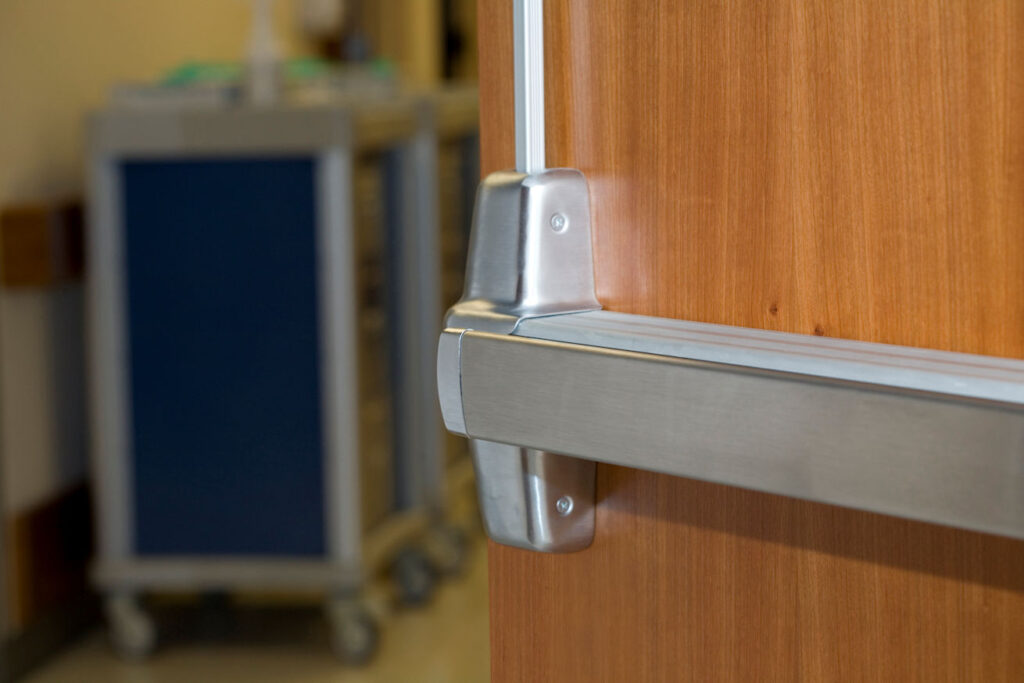
Limits on operable force for hardware are now included in ICC A117.1 and the International Building Code, as well as the ADA Standards.
The ADA and ICC A117.1 requirements are fairly consistent with regard to door openings, but there is an important difference when it comes to the limits on operable force. Prior to the 2010 edition of the ADA standards and the 2017 edition of ICC A117.1, these publications did not include a limitation on the amount of force permitted to operate door hardware. In the 2010 edition of the ADA standards, which went into effect in 2012, an editorial change was made that required door hardware to comply with Section 309.4 – Operable Parts. This section limits the force to activate operable parts to a maximum of 5 pounds.
The ICC A117.1 standard was modified in the 2017 edition to include prescriptive requirements for the force to operate door hardware, and the limits differ from the force stated in the ADA standards. For hardware operated with a forward, pushing or pulling motion (ex. panic hardware), the hardware must operate with 15 pounds of force or less. For hardware operated with a rotational motion (ex. lever handles), the limit on operable force is 28 inch-pounds. These limitations are based on values specified by the ANSI/BHMA standards for hardware, as well as model code requirements. The forces included in ICC A117.1 have also been incorporated into the 2021 edition of the IBC.

The U.S. Access Board’s Guide to the ADA Accessibility Standards recommends 1 1/2 inches of clearance behind door pulls and other hardware.
Hardware Clearance
To help ensure that the majority of building occupants are able to operate door hardware, sufficient clearance is needed. The amount of clearance that is required behind or beside a door pull, lever handle, or other operable hardware is not specified by the accessibility standards, but it is addressed in the U.S. Access Board’s Guide to the ADA Accessibility Standards. The recommended knuckle clearance for bars, pulls, and similar hardware is 1 ½ inches, minimum. This is consistent with the clearance requirements for handrails and grab bars.
To meet the intent of the standards, the minimum clearance should also be provided on each side of a vertical pull handle. For example, the accessibility standards require hardware for sliding doors to be exposed and usable from both sides when the doors are in the fully open position. Surface mounted pull handles are typically used to satisfy this requirement. When a sliding door is in the fully open or fully closed position, the distance from the pull handle to the jamb should be at least 1 ½ inches.
Mounting Height
The accessibility standards include limitations on the reach ranges for building elements and operable parts to accommodate the majority of building occupants, including people using wheelchairs. The allowable mounting height range for door hardware is more restrictive than the reach ranges specified in the standards. Operable hardware must be mounted 34 inches minimum and 48 inches maximum above the floor or ground. Some state codes and standards differ regarding the allowable mounting height for door hardware. For example, Chapter 11 of the California Building Code limits the range for door hardware to a minimum of 34 inches and a maximum of 44 inches above the floor. This can result in difficulties coordinating hardware installation so that all operable parts are within the allowable range.
A common question related to hardware mounting heights is whether the entire operable part must be within the range specified in the codes and standards. Components such as lever handles, thumbturns, and panic hardware should fall completely within the allowable range. However, there are some products, such as vertical door pulls, that could extend above or below the range if a usable portion of the pull is within the 34- to 48-inch area. Careful coordination is needed for components that fall near the limits of the mounting height. For example, if a deadbolt is installed with the centerline of the lock at 48 inches above the floor, there may be operable parts of the lock that are above the 48-inch mark.
There are several exceptions to the mounting height requirements. The ADA standards allow existing locks in any location when installed on existing glazed doors without stiles, existing overhead rolling doors or grilles, and similar existing doors or grilles that are designed with locks that are activated only at the top or bottom rail. There is also an exception in the codes and standards related to swimming pool doors and gates, which helps to ensure that small children can not enter the pool area unaccompanied by an adult.
Opening Force
Opening force limitations for manually operated doors are addressed separately from operable force requirements for door hardware. For interior, non-fire-rated, swinging, sliding, and folding doors, the codes and standards limit the opening force to 5 pounds, maximum. The accessibility standards do not address the opening force for exterior doors and fire doors, but the model building codes and fire codes do include opening force limitations for these doors. The opening force for manually operated exterior doors and fire doors is limited to 30 pounds to set the door in motion and 15 pounds to move the door to the fully open position.
An advisory in the ADA standards clarifies that the maximum opening force pertains to the continuous application of force that is needed to open a door fully, not to the initial force that is necessary to overcome the inertia of the door. The force required to retract or disengage latching hardware is not measured in conjunction with the opening force. The IBC specifies that the opening force is measured by applying force to the latch side of the door, and the IBC Commentary states that the door will be unlatched before the force is measured.
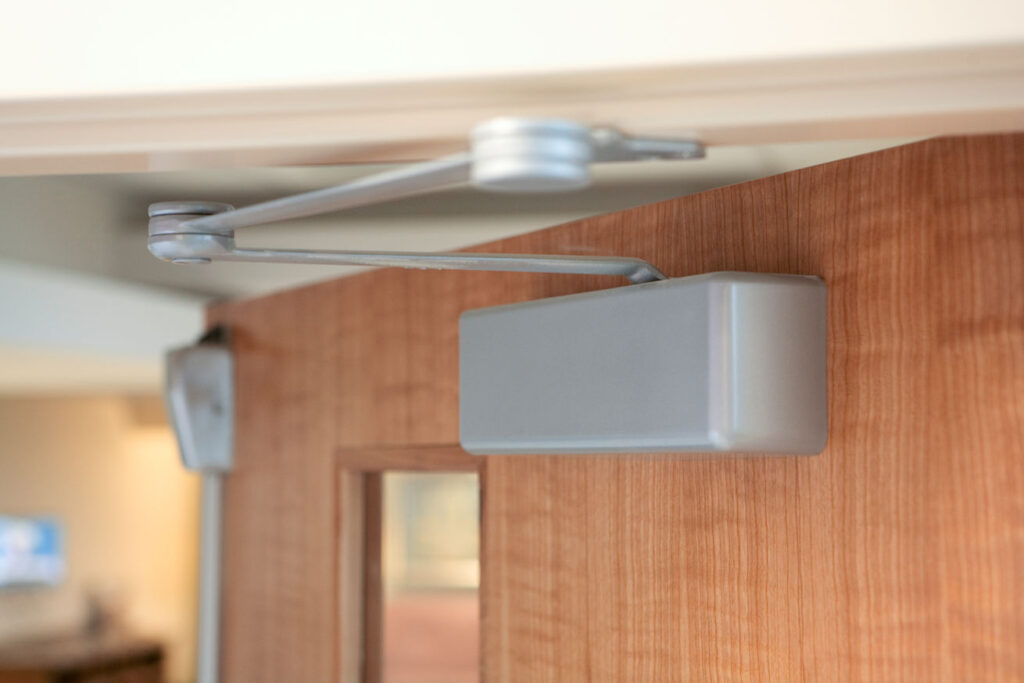
Door closers must be adjusted to meet the opening force and closing speed limitations of the accessibility standards.
The U.S. Access Board’s ADA Guide includes a recommendation for how to measure the opening force of a door; Annex A of ANSI/BHMA A156.4 – Standard for Door Controls – Closers also includes a recommended method that varies slightly. According to the ADA Guide, the door is unlatched and opened so that the push-side face of the door aligns with the pull-side face of the door frame. A force gauge is placed immediately above the operable hardware, about 2 ½ inches from the latch edge of the door. Keeping the gauge perpendicular to the face of the door, the door is pushed open to a position of 70 degrees, and the required force is noted on the gauge.
Closing Speed
To help ensure that building occupants can safely move through openings that are equipped with door closers or spring hinges, both the ADA standards and ICC A117.1 include limitations on the closing speed of doors. If a door has a door closer, it must take at least 5 seconds for the door to move from the 90-degree position to a point 12 degrees from closed. For doors with spring hinges, the minimum time permitted for the door to move from the 70-degree position to the closed position is 1.5 seconds.
The delayed action feature of a door closer holds the door open for 1-2 minutes when the door is opened to approximately 90 degrees. This feature is not required by the accessibility standards, but it may be helpful in some applications as it gives a person more time to maneuver through a doorway. In the past there were questions about whether delayed action closers were allowed to be used on fire door assemblies. This was clarified in the 2018 edition of the IBC, and the code now specifically states that delayed action closers are permitted on fire doors.
Appendix A of ANSI/BHMA A156.4 includes a recommended method for measuring closing time to determine compliance with the ADA standards. A point is located on the center line of the push plate or lock trim, or at 30 inches from the hinge edge of the door, whichever is greater. The floor is marked at this point with the door open to 90 degrees, and a second mark on the floor is made with the door at the 12-degree position. The closing time is measured as the door moves from one point to the other. A similar process could be used for a door equipped with spring hinges.
Conclusion
Because some of the language related to door hardware that is found in the accessibility standards is not prescriptive, interpretations may be inconsistent. In some cases, more than one set of accessibility requirements may apply to a particular project, and state and local codes are sometimes more restrictive than the national standards. In many jurisdictions, ICC A117.1 is the referenced standard used during design and construction, and the ADA applies throughout the life of the building, as it is a federal law.
Given the potential for conflicting requirements and interpretations, it is important to be familiar with all of the codes and standards that apply in a particular jurisdiction. Information found in the Commentary and Handbook editions of the codes and standards, the U.S. Access Board’s ADA Guide, the ANSI/BHMA standards, and other supplementary sources can be very informative but is not technically part of the enforceable codes and standards. The safest approach is to comply with the most stringent requirements, and to consult the Authority Having Jurisdiction (AHJ) when questions arise.
You need to login or register to bookmark/favorite this content.

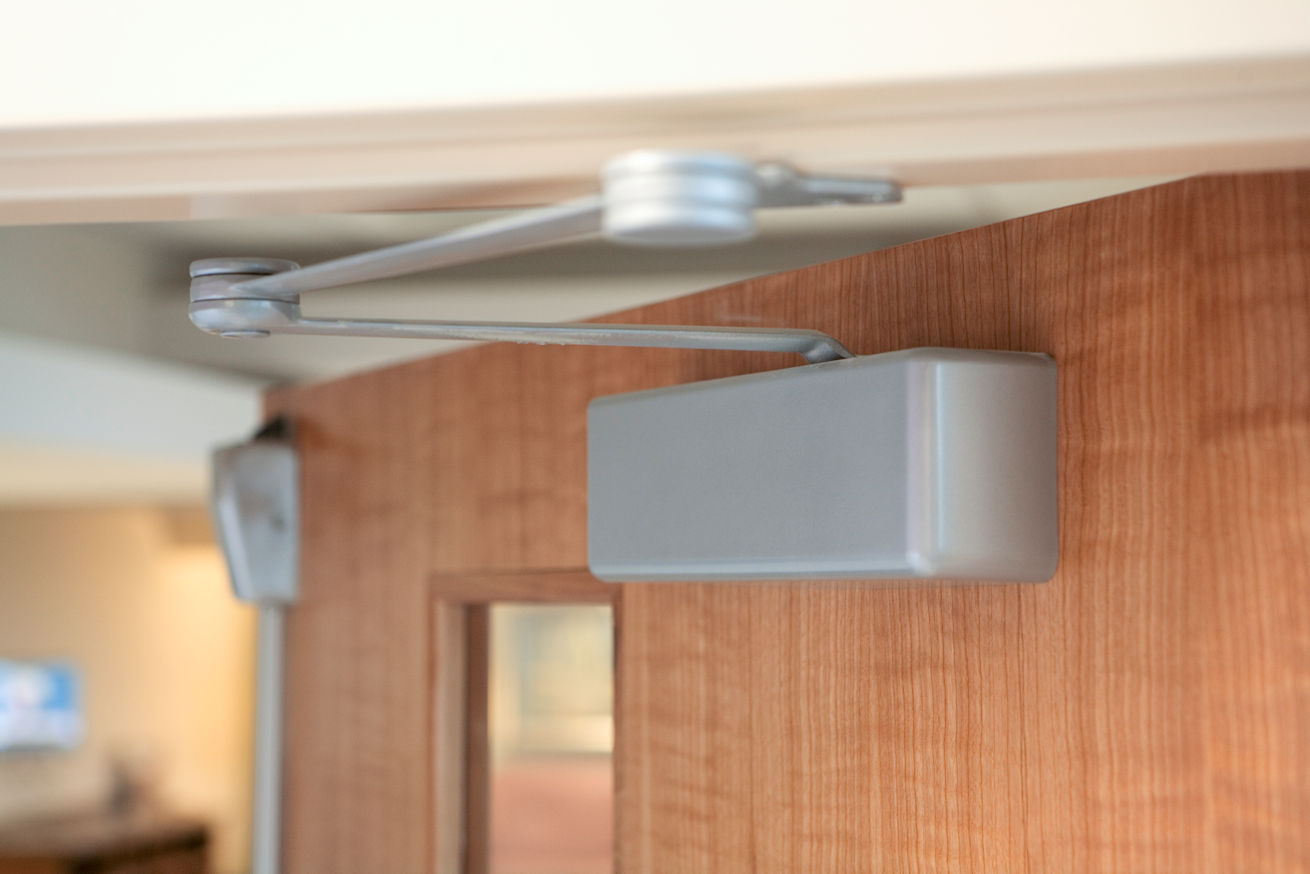
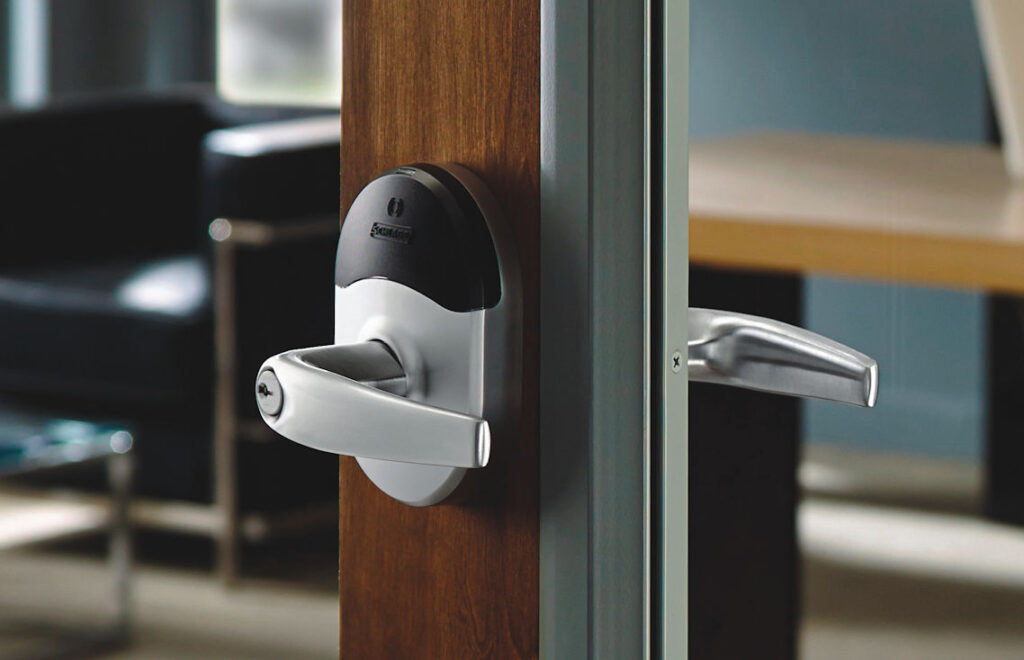
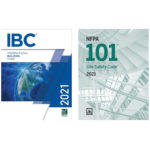
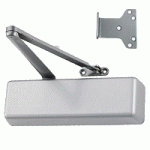
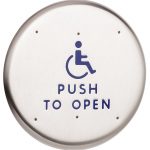

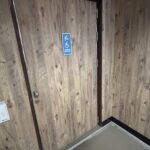



Look at the sentence, “Operable hardware that requires simultaneous hand and figure movements is not recommended, as greater dexterity and coordination are needed.”
I believe the word “finger” was intended where the word “figure” is shown.
As for mounting height, at least in Pennsylvania, deadlocks were allowed (I had this in writing from the PA Dept. of Labor & Industry) at any location since they would be controlled/operated by building staff or security and not operated by the general public or individuals with disabilities. An example would be gang toilets in schools. These doors are usually equipped with push/pull hardware and secured by a classroom deadlock and the deadlock should be C/L at 60″ above the floor thus avoiding interference with the push/pull hardware. There are other examples as well, but since I am retired for six years now, I am not on top of things, but I don’t see any valid reason why this exemption would be changed.
You’re right, Jerry! And you can’t imagine how many times I read it without noticing the typo – thanks!
– Lori
Given constant real-world questions, I am curious about the location of the credential reader in relation to the door swing? If outside, the gate swing and sidewalk? Does the credential reader on every narrow sidewalk with an access-controlled gate need to be mounted on a gooseneck?
In California, how far away from the door should the card readers for access controls be installed? Is there a range?
Hi Steve –
I don’t know of a requirement in the codes and standards for the distance. I wrote about this question here: https://idighardware.com/2021/07/qq-clear-floor-space/.
– Lori